B 50 W
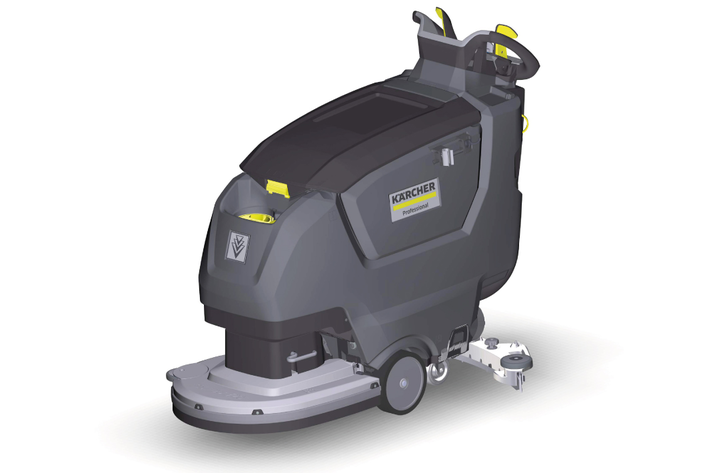
59698640 (08/24)

59698640 (08/24)
 Read these original operating instructions and the enclosed safety instructions before using the device for the first time. Proceed accordingly.
Read these original operating instructions and the enclosed safety instructions before using the device for the first time. Proceed accordingly.
Keep both books for future reference or for future owners.
This scouring and vacuum machine is used for wet cleaning of level floors.
The device can be adjusted to suit the respective cleaning task by adjusting the water quantity, detergent volume and travel speed.
The device can be adapted to the respective cleaning task by selecting a suitable cleaning program.
The working width and the capacity of the fresh and waste water tanks (see chapter "Technical data") enable effective cleaning with a long working time.
The device is self-propelled.
The batteries can be charged using the built-in charger. The charger can be operated with a voltage of 100-240 V.
The device can be equipped with various accessories to suit the respective cleaning task. Request a copy of our catalogue or visit our Internet website at www.kaercher.com.
This device is suitable for commercial and industrial use, e.g. in hotels, schools, hospitals, factories, shops, offices, and rental companies. Use the device only in accordance with the information in these operating instructions.
The device may only be used for cleaning smooth surfaces that are insensitive to water and polishing.
The device is not suitable for cleaning frozen floors (e.g. in cold stores).
The device is designed for cleaning indoor floors or covered areas.
The device is suitable for use in the temperature range 5-40 °C.
The device must be stored in a frost-free location.
The device is not suitable for use in potentially explosive environments.
No flammable gases, undiluted acids or solvents may be taken up with the device. These include petrol, paint thinner or heating oil, which can form explosive mixtures in the suction air turbulence. Do not use acetone, undiluted acids or solvents, as these corrode the materials used on the device.
Reactive metal dusts (e.g. aluminium, magnesium, zinc) in conjunction with highly alkaline or acidic detergents form explosive gases.
The device is not intended for cleaning public traffic routes.
Take the permissible surface load of the floor into account (see chapter Technical data).
The device may only be fitted with original accessories and spare parts.
When using chargers or batteries, only the components approved in the operating instructions may be used. A different combination must be approved by the responsible charger supplier and/or battery supplier.
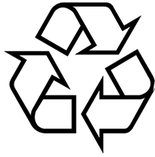 The packing materials can be recycled. Please dispose of packaging in accordance with the environmental regulations.
The packing materials can be recycled. Please dispose of packaging in accordance with the environmental regulations.
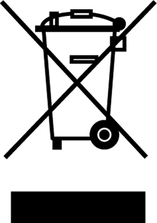 Electrical and electronic devices contain valuable, recyclable materials and often components such as batteries, rechargeable batteries or oil, which - if handled or disposed of incorrectly - can pose a potential danger to human health and the environment. However, these components are required for the correct operation of the device. Devices marked by this symbol are not allowed to be disposed of together with the household rubbish.
Electrical and electronic devices contain valuable, recyclable materials and often components such as batteries, rechargeable batteries or oil, which - if handled or disposed of incorrectly - can pose a potential danger to human health and the environment. However, these components are required for the correct operation of the device. Devices marked by this symbol are not allowed to be disposed of together with the household rubbish.
Current information on content materials can be found at: www.kaercher.de/REACH
For guidance regarding safe disposal of batteries, refer to your local council or waste governing body. The battery must be removed from the appliance before it is scrapped. The battery must be disposed of safely.
Only use original accessories and original spare parts. They ensure that the appliance will run fault-free and safely.
Information on accessories and spare parts can be found at www.kaercher.com.
Check the contents for completeness when unpacking. If any accessories are missing or in the event of any shipping damage, please notify your dealer.
Before using the device for the first time, read and observe these operating instructions and the accompanying brochure: Safety instructions for brush cleaning devices, No. 5.956-251.0.
The device can tip over
Risk of injury
Do not operate the device on sloping surfaces.Risk of accident due to incorrect operation
People can be injured.
Operators must be properly trained on how to use this machine.The device may only be operated when the hood and all covers are closed.
Risk of injury due to missing or modified safety devices!
Safety devices are provided for your own protection.
Do not bypass, remove or render ineffective any safety devices.Remove the Intelligent Key for an immediate shutdown (emergency off).
The travel drive and the brush drive switch off when the driving lever is released.
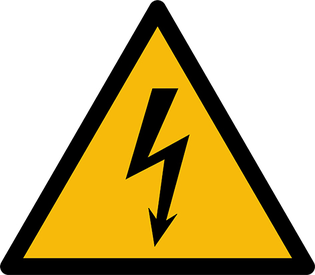 | DANGERCharging process Electric shock Do not remove the pole protection caps from the battery poles.Ensure correct installation |
 | ATTENTIONRisk of damage Water damages the suction turbine Make sure that no water enters an opening marked in this way. |
The Li-Ion version has built-in lithium-ion batteries. These are subject to special criteria. Removal and installation as well as testing of defective batteries may only be carried out by Kärcher customer service or a qualified specialist.
For storage and transport instructions, please contact your Kärcher Customer Service.
Modifications and alterations to the device are not permitted.
You must not open the battery, there is a danger of a short circuit. Irritating vapours or corrosive liquids can also escape.
Do not expose the battery to strong sunlight, heat or fire. There is a danger of explosion.
Do not operate the charger in an explosion-hazard environment.
Do not use a dirty or wet charger.
Ensure sufficient ventilation during the charging process.
Danger of explosion. Keep naked flames away from the battery or the battery charging room, and do not generate sparks or smoke in the vicinity of a battery of a battery charging room.
Danger of explosion. Do not place any tools or objects on the battery, i.e. on the end poles and cell connectors.
Check the device and the mains cable for damage before each use. Do not use damaged devices and have damaged parts repaired by qualified personnel only.
Keep children away from batteries and charger.
Do not charge damaged batteries. Have damaged batteries replaced by Kärcher customer service.
Do not throw a defective battery in the household rubbish. Inform Kärcher Customer Service.
Avoid contact with fluid leaking from defective batteries. In case of accidental contact, rinse the liquid with water. In case of contact with the eyes, consult a doctor as well.
Be sure to observe these operating instructions. Adhere to the recommendations of the legislature regarding the handling of batteries.
The mains voltage must match the voltage indicated on the type plate of the device.
Use the charger for charging approved battery packs only.
Operate the battery only with this device. It is forbidden and dangerous to use it for other purposes.
Observe the following warnings when handling the batteries:
 | Observe notes in the instructions for the battery, on the battery and in these operating instructions. |
 | Wear eye protection. |
 | Keep acids and batteries away from children. |
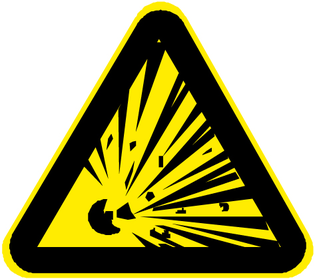 | Risk of explosion |
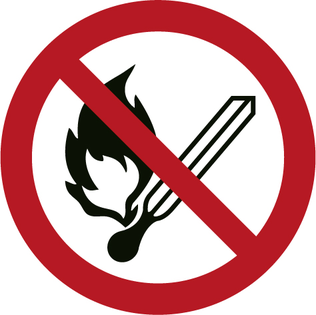 | Fire, sparks, open flames and smoking are prohibited. |
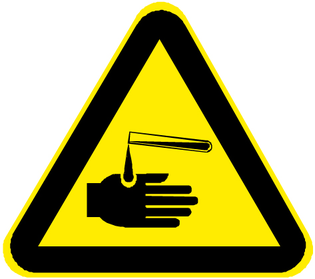 | Risk of acid burns |
 | First aid. |
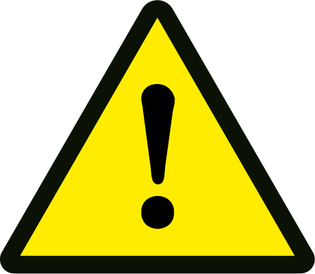 | Warning |
 | Disposal |
 | Do not throw batteries in the bin. |
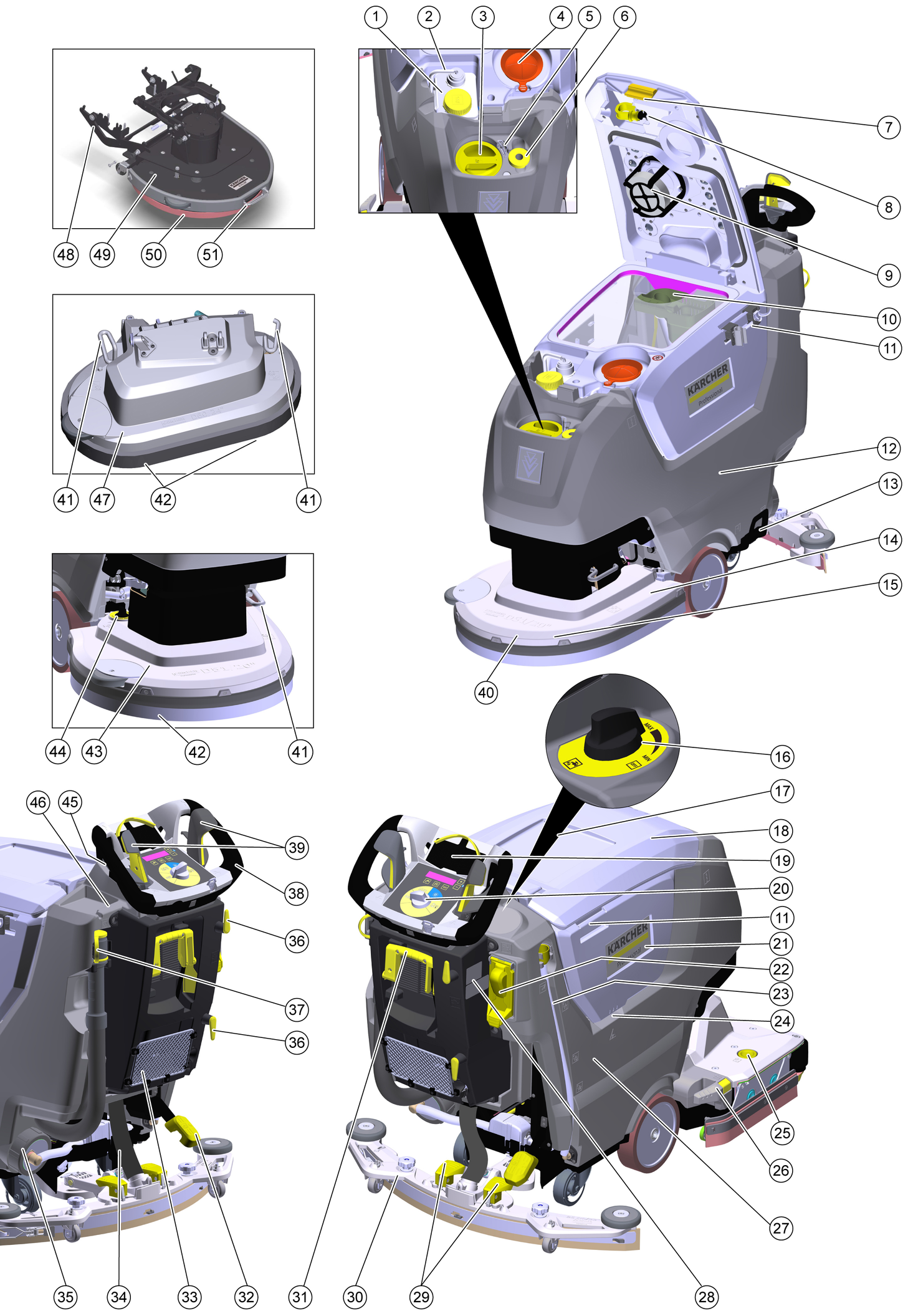
* optional, ** Not in scope of delivery
Device components intended for operation or maintenance by the user are highlighted in yellow.
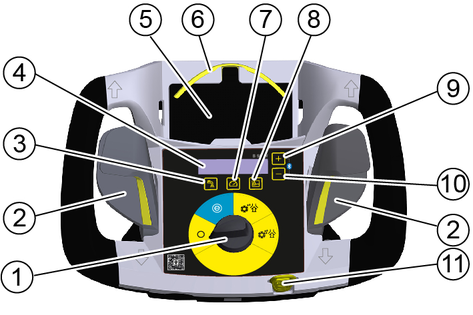
* Option
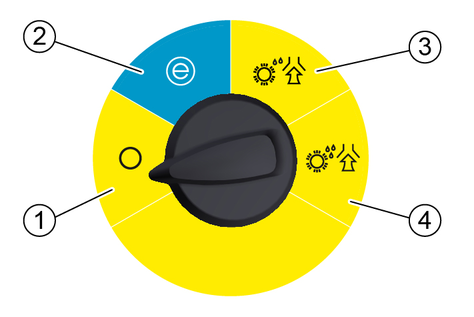
The suction bar can be dismantled and hooked onto the edge of the device for driving through narrow spaces or for storage,.
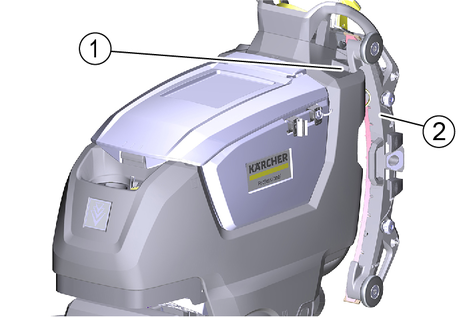
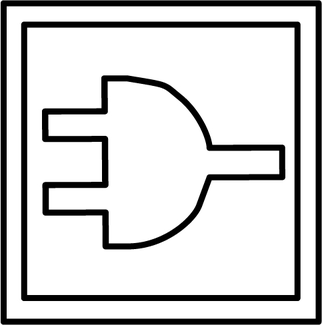 | Mains cable for charger |
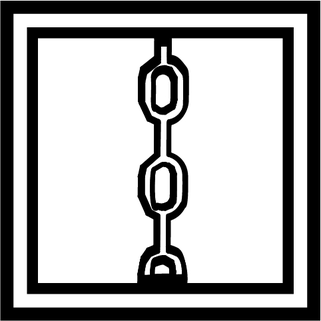 | Lashing point |
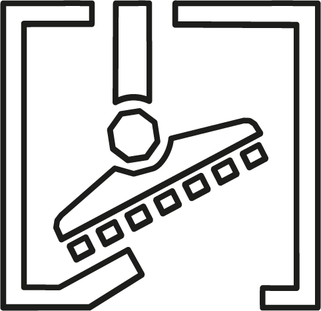 | * Mop holder |
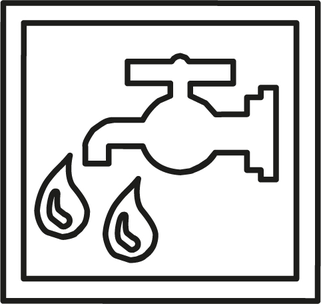 | * Fill with fresh water |
 | Fresh water tank filling level 25% |
 | Fresh water tank filling level 50% |
 | Fresh water tank filling level 100% |
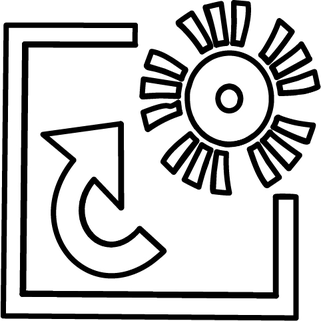 | Brush replacement pedal (BD) Brush replacement button (BR) |
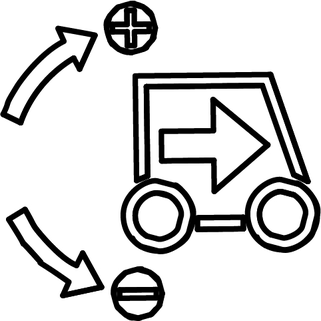 | Adjust brush tilt (D 51 cleaning head only) |
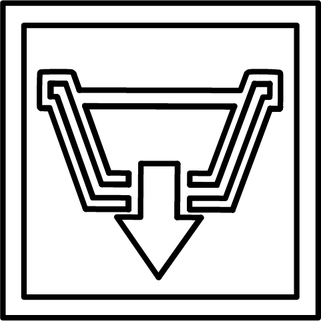 | Drain for waste water Drain for fresh water |
 | Remove the coarse dirt container |
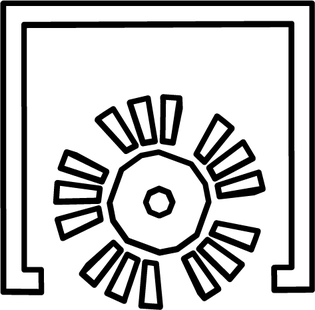 | Raise/lower the cleaning head |
 | Drive forwards |
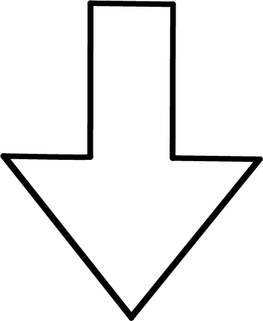 | Drive in reverse |
The Intelligent Key is used to switch on the device and for enabling certain device functions.
Yellow: Operator
The device can be used. All settings for the cleaning programs enabled for this key via the smartphone app may be changed.
Grey: Foreman
The device can be used. All settings for the cleaning programs available for the device may be changed.
Risk of damage when driving the device
The device must not be driven with the brush head raised, as this may damage or destroy the cleaning unit.
Fold down the brush head before unloading or driving.Unscrew the screws on the transport locks.
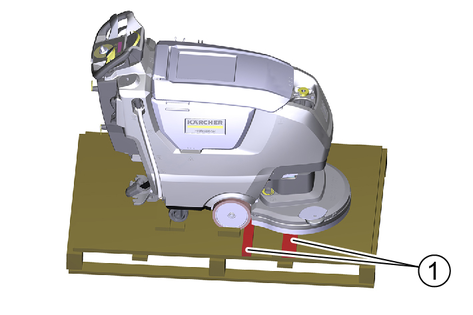
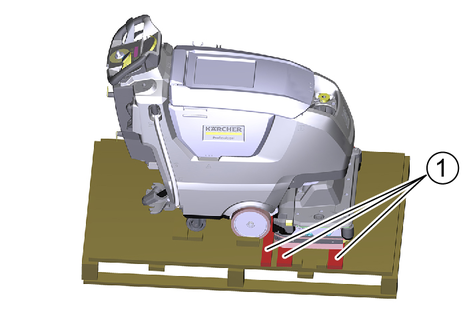
Remove the transport locks.
Push the device forwards from the pallet.
Pivot both clamping levers upwards.
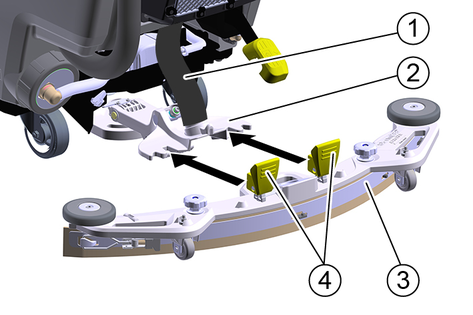
Insert the suction bar in the suction bar mount.
Pivot both clamping levers downwards.
The installation of the brushes is described in the chapter "Maintenance work".
Replacement battery typ; Inventus (25.6 v 80Ah lithium).
Risk of damage
Batteries may only be replaced with batteries of the same technology.Lead batteries must not be replaced by Li-Ion batteriesLi-ion batteries must not be replaced by lead batteries.Lead batteries:
Description | Order no. |
|---|---|
Set 76 Ah - maintenance-free, 24 V | 2.815-099.0 |
Set 105 Ah - maintenance-free, 24 V | 2.815-100.0 |
Set 115Ah - maintenance-free, 24 V | 2.815-091.0 |
Set 80 Ah - maintenance-free, 24 V | 2.815-090.0 |
The device requires 2 batteries.
Li-ion batteries:
Description | Order no. |
|---|---|
80 Ah, 25.6 V | 6.654-454.0 |
The device requires 1 battery.
Length | 350 |
Width | 355 |
Height | 290 |
In the case of the device variant with Li-Ion battery, the battery is already installed and connected.
Danger of fire and explosion!
Do not place tools or similar items on the battery. Risk of short-circuit and explosion.Smoking and naked flames must be strictly avoided.Rooms where batteries are charged must have good ventilation as highly explosive gas is emitted during charging.Risk of injury due to the device tipping over!
The device may tip over when removing and installing batteries.
Ensure that the device is positioned stably when removing and installing the batteries.Risk of damage to the control electronics!
The control electronics can be destroyed by reversing the polarity of the battery connections.
Take care to ensure the correct polarity when connecting the batteries.Danger to life from fire or explosion if batteries are deeply discharged!
Incorrect charging of deeply discharged batteries can cause a fire.
Do not start the device if the battery is deeply discharged.Make sure that the battery is charged before starting the system.Push the device approx. 2 m forwards so that the steering rollers point to the rear.
Hold the waste water tank by the recessed grip and pivot it sideways and upwards.
Fit the batteries in the pan.
Connect the batteries:
Fit the spacers.
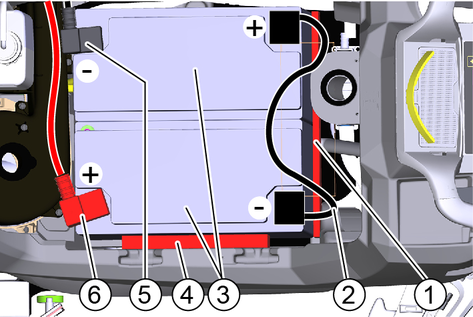
Connect both batteries with the connection cable.
Clamp the connection cables to the (+) and (‑) battery terminals that are still free.
Pivot the waste water tank downwards.
Li-Ion batteries are delivered in transport mode and must be activated before initial startup of the device.
Charge the battery (see "Initial startup/Charging the battery"), this will end the transport mode.
Risk of injury due to the device tipping over!
The device may tip over when removing and installing batteries.
Ensure that the device is positioned stably when removing and installing the batteries.Device tipping over
Risk of injury, risk of damage
Only remove the batteries when a cleaning head is attached to the device.Set the program selection switch to "0".
Remove the Intelligent Key.
Empty the waste water tank.
Push the device approx. 2 m forwards so that the steering rollers point to the rear.
Hold the waste water tank by the recessed grip and pivot it sideways and upwards.
Disconnect the cable from the negative terminal of the battery.
Disconnect the remaining cables from the battery.
Remove the spacers.
Remove the battery.
Dispose of the used batteries in accordance with statutory provisions.
Before the initial startup, after a service reset or when changing to a different battery type, it is essential to set the charging characteristic.
Danger due to the device inadvertently starting up
Risk of injury
Disconnect the spark plug connector or disconnect the battery before performing any work on the device.Risk of damage to the battery
The service life and charging capacity of the battery can be affected by an incorrect charging characteristic.
Make sure that the battery characteristic curve that matches the battery is selected in the machine.The currently selected battery characteristic curve can be seen on the display or via the app in the "Device status" area during charging.The charging characteristic can only be adjusted by Kärcher Service.
Battery characteristics are available for the following batteries:
EXIDE GF12105V
HOPPECKE TB115
EXIDE GF12076V
EXIDE FF12080W
TROJAN 27TMX
HOPPECKE TB80
ZENITH L120185
To enable the use of other batteries as well, a custom battery characteristic curve can be created by the Kärcher service department.
Risk of injury from charger!
Electric shock due to improper use of the charger!
Adhere to the mains voltage and fuse values specified on the device type plate.Only use the charger in dry rooms with sufficient ventilation.The built-in charger is electronically controlled and suitable for all recommended batteries, it ends the charging process automatically.
By using a fast charger, the charging time can be reduced to max. 2.5 hours (only for the lithium-ion version).
The corresponding charging characteristic must be set for each type of battery installed.
The installed battery is shown in the display when charging.
The average charging time is a maximum of 14 hours.
The device cannot be used during the charging process.
The device has deep discharge protection, i.e. the brush motor and turbine are switched off automatically in operation when the permitted minimum capacity level is reached.
Drive the device directly to the charger and do not drive on slopes.
Plug the mains plug on the power cable into the mains socket.
Charge until the display shows full charge.
Danger of burns due to acid leakage!
Only fill the battery with water when it is discharged.
When handling battery acid, use safety goggles and immediately rinse out any acid splashes on the skin or clothing with water.Risk of damage to the batteries!
Using water with additives will void the battery’s warranty.
Top up the batteries using only distilled or desalinated water (EN 50272-T3).Do not use any foreign additives or touch-up agents.Add distilled water one hour before the charging process comes to an end. Observe the correct acid level according to the battery label.
All cells must produce gas at the end of the charging process.
Insert the Intelligent Key into the control panel.
Set the program switch to a cleaning program.
The display shows the following, one after the other:
Kärcher Logo
Time until next service in hours
Battery status and operating hours
Software version
Operating display
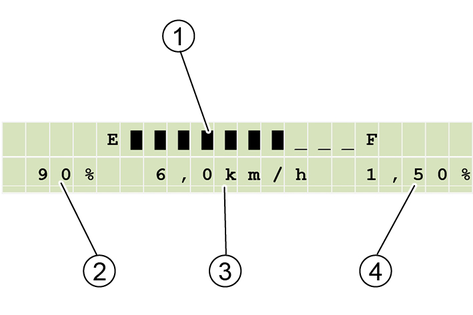
The device is ready for operation.
The "Machine Connect" smartphone app connected to the device can be used to perform advanced device functions:
Set the type of cleaning head
Set the maximum transport speed
Switch the USB port off/on
Set the after-running time of the brush(es)
Set the after-running time of the suction
Switch the speed-dependent water dosing on/off
Manage the permissions of the yellow Intelligent Key
Restore the factory settings
The possible functions depend on the device version.
Scan the QR code on the device with your smartphone.
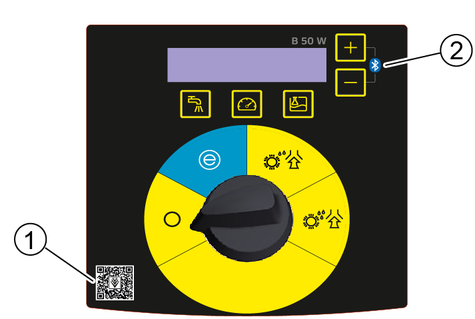
Install the "Machine Connect" app on the smartphone and start it.
Insert the Intelligent Key into the control panel.
Press the "+" and "-" keys on the control panel of the device simultaneously for 3 seconds.
The Bluetooth® symbol on the control panel flashes during the pairing process.
Follow the pairing instructions of the app on the smartphone.
The functions of the app are explained on the smartphone.
The Bluetooth symbol lights up continuously when the smartphone is paired with the device.
The mobile phone can be connected to the USB port of the device to charge the battery.
After a certain operating time has elapsed, the display prompts to perform various maintenance activities:
Call | Interval (hours) |
|---|---|
CLEANING VACUUM FILTER | 10 |
CLEANING SUCTION BAR | 20 |
CLEANING FILTER WATER | 50 |
CHECK BRUSH WEAR | 100 |
CHECK SUCTION LIP | 100 |
Carry out the indicated maintenance activity.
Press any button on the control panel to confirm.
The prompt is reset and displayed again after the interval has elapsed.
Risks during operation
Loss of stability
Risk of injury
Risk of injury
Release the driving lever in the case of danger.Operate the pedal to raise/lower the cleaning head with one foot only. Keep the other foot firmly and securely on the floor.Open the fresh water tank cap.
Fill fresh water (max. 50 °C) to the lower edge of the filling nozzle.
Note: The fresh water hose can be clamped with the hose holder during filling.
Close the fresh water tank lock.
Pull the filling hose out of the device.
Connect the end of the filling hose to a water tap.
Remove the fresh water tank cap.
Open the water supply (water temperature maximum 50 °C).
Observe the filling level of the fresh water tank through the filling hole.
Close the water inlet when the filling level reaches the lower edge of the filling nozzle.
Fit the fresh water tank lock.
Disconnect the filling hose from the water tap.
Push the filling hose into the device.
Connect the water hose to the connection nozzle of the filling system (maximum water temperature 50 °C).
Open the water inlet.
Monitor the device, the automatic filling system interrupts the water supply when the fresh water tank is full.
Close the water inlet.
Remove the water hose.
Risk of damage to the device!
If unsuitable detergents are used, the device may get damaged.
Use only recommended detergents. The operator carries all increased risks relating to operational safety and increased risk of accidents if using other detergents.Use only detergents free of solvents, salt and hydrofluoric acid.Adhere to the safety instructions stated on the detergent packaging.Do not use heavily foaming detergent.
Recommended detergents
Application | Detergent |
|---|---|
Maintenance cleaning of all water-resistant floors | APPROX 50 C RM 756 |
Maintenance cleaning with care components | RM 746 RM 780 |
Maintenance cleaning and basic cleaning of industrial floors | RM 69 |
Maintenance cleaning of glossy coverings | RM 755 |
Maintenance cleaning and basic cleaning of fine stone tiles | RM 753 |
Maintenance cleaning and basic cleaning of acid-resistant coverings | RM 751 |
Cleaning and disinfection | RM 732 |
Basic cleaning of all alkali-resistant floor coverings | RM 752 |
Basic cleaning and de-coating of alkali-sensitive floors | RM 754 |
Only with DOSE variant:
Detergent is added to the fresh water on the way to the cleaning head by a dosing device.
Fill the detergent into the detergent canister.
A maximum of 3% detergent can be added with the dosing device. For higher dosage, the detergent must be added to the fresh water tank.
Danger of clogging
When adding detergent to the fresh water tank, the detergent can dry out and disrupt the function of the dosing device.
Rinse the device with clear water after adding detergent to the fresh water tank: Select a cleaning program with water application, set the water quantity to the highest value, set the detergent dosage to 0.Fill the detergent into the fresh water tank.
The cap of the filling hole has a scale inside and can be used to measure the detergent volume.
With the DOSE device variant, the detergent is added to the fresh water on its way to the cleaning head.
The detergent dosage can be set separately for each cleaning programme.
Insert the Intelligent Key into the control panel.
Select the cleaning programme to be set with the programme switch.
Press the Detergent dosing button.
Set the desired detergent dosage with the "+" and "-" buttons.
To accept the setting, either wait 3 seconds or press one of the other buttons.
Adjust the water quantity according to the degree of soiling of the floor covering.
Perform initial cleaning tests with a low water volume. Increase the water volume step by step until achieving the desired cleaning result.
The cleaning head continues operating without a liquid supply if the fresh water tank is empty.
A device with a manual water valve is equipped with a regulating knob for water dosage to the right of the control panel.
Turn the water dosage regulating knob to the desired value.
The brush irrigation is only active when the cleaning head is lowered and the driving lever is actuated.
A device with an electric water valve is equipped with a water dosage button on the control panel.
The water dosage can be set separately for each cleaning programme.
Insert the Intelligent Key into the control panel.
Select the cleaning programme to be set with the programme switch.
Press the water dosage button.
Set the desired water dosage with the "+" and "-" buttons.
To accept the setting, either wait 3 seconds or press one of the other buttons.
The brush irrigation is only active when the cleaning head is lowered and the driving lever is actuated.
The inclination must be adjusted so that the suction lips of the suction bar make even contact with the floor over the entire length of the suction bar.
Park the device on a surface without a slope.
Select the "Suction" program.
Drive the device a small distance forwards.
The suction bar is lowered.
Read the spirit level.
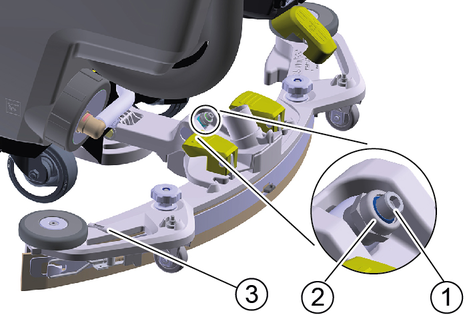
Release the M 12 nut while holding the M 10 hexagon head screw with an open-end wrench.
Adjust the screw so that the spirit level indicator is between the two lines.
Tighten the M 12 nut while holding the M 10 hexagon head screw with an open-end wrench.
To check the new setting, move the device forward a short distance in suction mode with the suction bar lowered and observe the spirit level. Repeat the adjustment process if necessary.
The height adjustment affects the bending of the suction lips on contact with the floor.
Standard setting: 3 washers above, 3 washers below the suction bar.
Uneven floor: 5 washers above, 1 washer below the suction bar.
Very smooth floor: 1 washer above, 5 washers below the suction bar.
Unscrew the nuts.
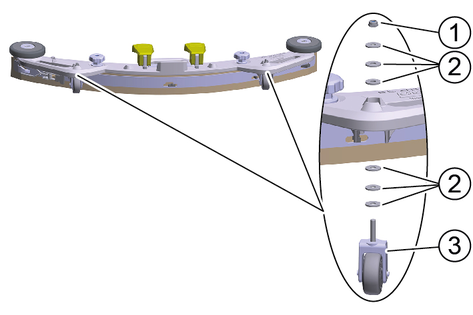
Place the desired number of washers between the suction bar and the spacer roller.
Fit the remaining unused washers above the spacer roller.
Screw on the nut and tighten.
Repeat the entire procedure at the second spacer roller.
Set both spacer rollers to the same height.
(Only with D 51 cleaning head)
If the device pulls to one side during cleaning, this can be remedied by adjusting the brush tilt.
After changing the brush/pad, it may be necessary to readjust the side pull.
Adjust the brush tilt rotary knob until the device moves straight ahead.
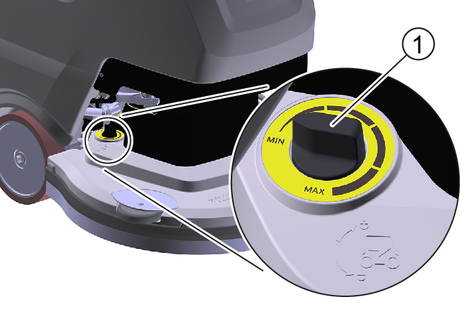
Turn the key-operated switch to "1".
The display shows the following one after the other:
Period of time until the next after-sales Customer Service
Software version, control panel
Charging state of the battery and number of operating hours
The device is constructed so that the cleaning head protrudes to the right. This makes it possible to work clearly and close to the edge.
Insert the Intelligent Key.
Pivot the suction bar lowering lever upwards.
Press the raise /lower cleaning head pedal down and latch it towards the right.
Set the program switch to the desired program.
Risk of damage when driving the device
The device must not be driven with the brush head raised, as this may damage or destroy the cleaning unit.
Fold down the brush head before unloading or driving.Drive the device.
Push the driving lever forward.
The device moves forward.
Push the driving lever backwards.
The device moves in reverse.
The device moves only when the driving lever is moved by 5°.
Release the driving lever.
The device stops.
Risk of damage
The floor covering can be damaged if the device is operated on the same spot for a long time.
Do not operate the device continuously on the same point.Insert the Intelligent Key.
Set the program switch to the desired cleaning program.
Pivot the lever downwards to lower the suction bar.
Press the cleaning head raise/lower pedal down, move it to the left and let it go up.
Push the driving lever forward and drive over the area to be cleaned.
When the waste water tank is full, the float switch closes the suction opening and the suction turbine runs at a higher speed. In this case, switch off the vacuuming function and drive to the location for emptying the waste water tank.
Turn the water quantity regulating knob to "OFF" (not for the DOSE version).
Release the driving lever.
Press the raise /lower cleaning head pedal down and latch it towards the right.
Continue moving a short distance.
The residual water is vacuumed up.
Pivot the suction bar lowering lever upwards.
Environmental pollution!
Environmental pollution due to improper disposal in waste water.
Observe the local waste water treatment regulations.Remove the drain hose from the support and lower it over a suitable collecting device.
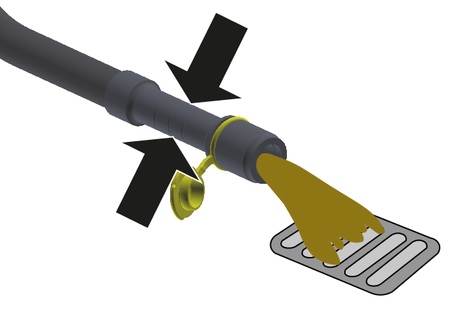
Squeeze or kink the drain hose at the intended point.
Open the cover of the drain hose.
Drain the waste water. Regulate the water volume by pressing or kinking.
Rinse the waste water tank with clear water.
Remove the waste water drain hose from the holder and lower it over a suitable collecting device.
Open the dosing unit cover at the drain hose.
Open the waste water tank cover.
Pull the flexible cap off the flushing system.
Connect the water hose to the flushing system.
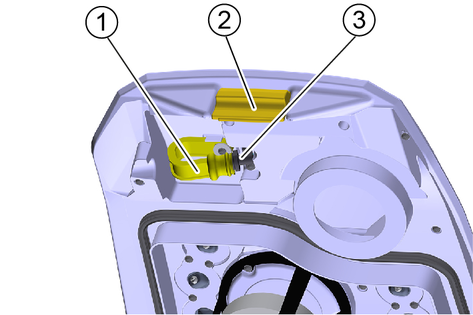
Close the waste water tank cover.
Open the water supply and flush the waste water tank for about 30 seconds.
If necessary, repeat the flushing process 2 - 3 times.
Close the water supply and disconnect the hose from the device.
Reattach the flexible cap to the water inlet of the flushing system.
Close the cover of the waste water tank. Press the tank ventilation flap in so that a gap remains open and the waste water tank can dry.
Push the waste water drain hose into the holder and closed the cover of the dosing device.
Open the fresh water tank cap.
Drain the fresh water.
Clean the filter.
Fit the fresh water tank cap.
Remove the filling level indicator hose from the holder and pivot it down.
Reattach the hose.
(R cleaning head only)
Lift the coarse dirt container and pull it out.
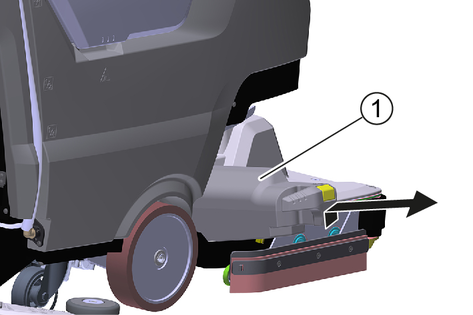
Empty the coarse dirt container and clean it if necessary.
Reinstall the coarse dirt container.
Turn the program switch to position "0".
Remove the Intelligent Key.
Press the raise/lower cleaning head lever down and latch it towards the right.
Pivot the suction bar lowering lever upwards.
Secure the device against rolling away.
Close the cover of the waste water tank. Press the tank ventilation flap in so that it engages in the groove of the fresh water tank so that the waste water tank can dry.
Charge the battery if necessary.
Driving on slopes
Risk of injury
Observe the maximum permissible gradient when operating the device on slopes for loading and unloading purposes (see chapter "Technical data").Drive slowly.Failure to observe the weight
Risk of injury and damage
Be aware of the weight of the device during transport.Only load the device with the dirt and fresh water tanks empty.Only load the device with the assistance of another person or by using the drive.Press the raise/lower cleaning head pedal down and latch it towards the right.
Remove the brushes to avoid damage.
Remove the suction bar from the device.
When transporting in vehicles, secure the device against slipping and tipping over using the transport eyelets according to the respectively applicable guidelines.
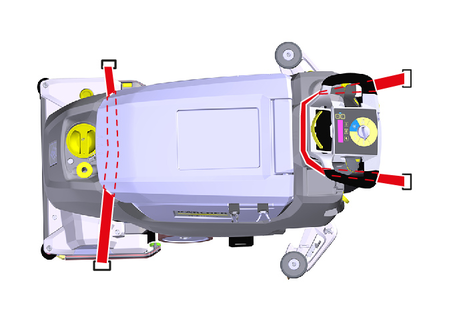
Risk of injury or damage due to non-observance of the weight
Be aware of the weight of the device during storage.Frost
Destruction of the device through freezing water
Drain all water from the device.Store the device in a frost-free location.This device may only be stored indoors.
Fully charge the batteries before storing them for a long period.
Fully charge the batteries at least every month during storage.
Inadvertently starting up device
Risk of injury
Turn the program switch to the "0" position.Remove the Intelligent Key prior to all work on the device.Pull out the charger mains plug.Drain and dispose of the waste water and fresh water.
You can agree on regular safety inspections or close a maintenance contract with your dealer. Please seek advice on this.
Risk of damage!
Risk of damage to the device due to improper cleaning.
Do not spray the device with water and do not use aggressive detergents.Drain the waste water.
Clean the waste water tank with the waste water tank flushing system.
Remove the coarse dirt filter from the waste water tank and clean it.
Check the turbine screen, remove it if necessary and clean it.
Clean the exterior of the device using a damp cloth, wetted with a mild washing lye.
Only with R cleaning head: Remove the coarse dirt container and empty it.
Only with R cleaning head: Clean the water distribution strip.
Check the suction lips, check for wear and replace if necessary.
Clean the squeegee blades on the cleaning head, check for wear and replace if necessary.
Clean the brushes, check for wear and replace if necessary.
Close the cover of the waste water tank. Press the tank ventilation flap in so that a gap remains open and the waste water tank can dry.
Charge the battery.
Lead-acid battery:
If the charging state of the battery is below 50%, charge the battery fully and without interruption.
If the charging state of the battery is above 50%, only recharge the battery if the entire operating duration will be required when next used.
Li-Ion battery:
Recharge as necessary.
Empty and flush the fresh water tank.
Clean the fresh water filter.
Clean the float.
For a temporarily shut-down device with lead-acid battery: Perform equalization charging of the battery.
Check battery poles for oxidation, brush off if necessary. Make sure the connection cables are firmly in place.
Clean the seals between the waste water tank and the cover, check for leaks and replace if necessary.
Only with R cleaning head: Clean the brush tunnel.
Only with R cleaning head: Pull the water distribution strip off the cleaning head and clean the water channel.
Check the acid density of the cells if the lead batteries are not maintenance-free.
For longer downtime periods, shut the device down with fully charged batteries. Fully charge the battery at least once a month.
Have the prescribed inspection performed by Customer Service.
Open the waste water tank cover.
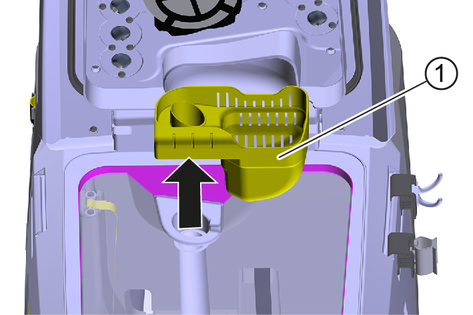
Pull the coarse dirt filter upwards and off.
Rinse off the coarse dirt filter under running water.
Reinsert the coarse dirt filter into the waste water tank.
Push the locking lever to the left and simultaneously pull the water distribution strip away from the cleaning head.
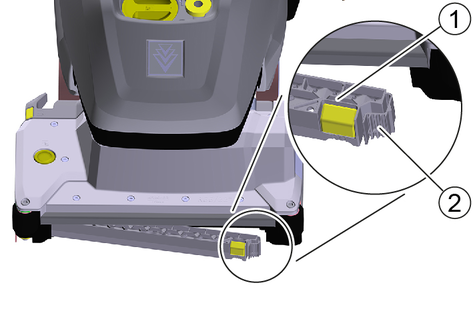
Remove the water distribution strip from the cleaning head.
Clean the water distribution strip.
Fit the left side of the strip into the cleaning head.
Pivot the water distribution strip towards the cleaning head and latch it into place on the right-hand side.
Drain the fresh water.
Unscrew the fresh water tank cap.
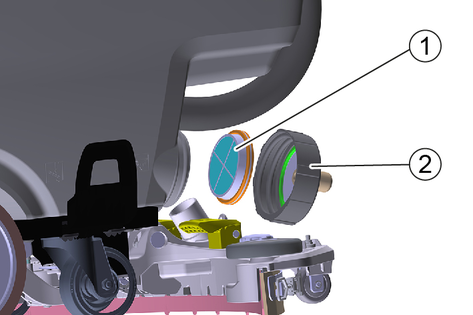
Pull out the fresh water filter and rinse with clear water.
Insert the fresh water filter.
Fit the fresh water tank lock.
The suction lips must be turned over or replaced when worn out.
The suction lips can be turned 3 times until all 4 edges are worn.
Remove the suction bar.
Unscrew the star handles.
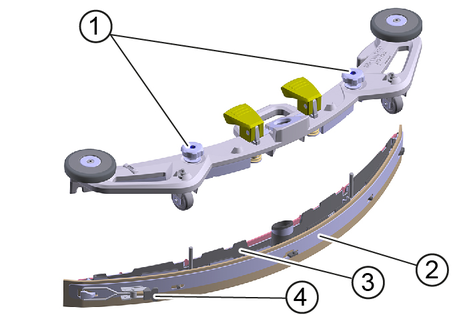
Pull out the inner part of the suction bar.
Open the tension lock.
Remove the strap.
Release the suction lips from the inner part.
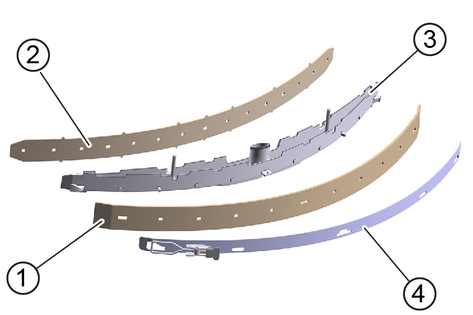
Press the turned or new suction lips onto the knobs of the inner part of the suction bar.
Attach the strap.
Push the inner part of the suction bar into the upper part.
Screw in and tighten the star handles.
Replace the disc brushes when the bristle length has reached 10 mm.
Press the raise/lower cleaning head lever down and latch it towards the right.
Push the brush replacement pedal down.
Pull the disc brush sideways and out from underneath the cleaning head.
Hold the new disc brush under the cleaning head, then press upwards and latch it into position.
Replace the roller brushes when the bristle length has reached 10 mm.
Press the raise/lower cleaning head lever down and latch it towards the right.
Press the Brush replacement button.
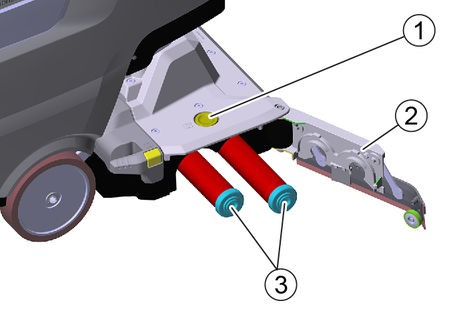
Pivot the bearing cover to the right.
Pull out the roller brushes.
Position the new front roller brush in the bearings.
Position the new rear roller brush in the bearings.
Pivot back the bearing cover and latch it into place.
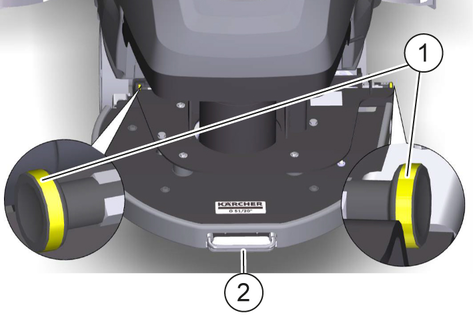
Pull out the push rod locking pin on the side and turn it (2x).
Hold the orbital head by the handle and swivel it upwards as far as it will go.
The orbital head engages firmly in this position thanks to the locking pin.
Slowly remove the pad from the pad drive board.
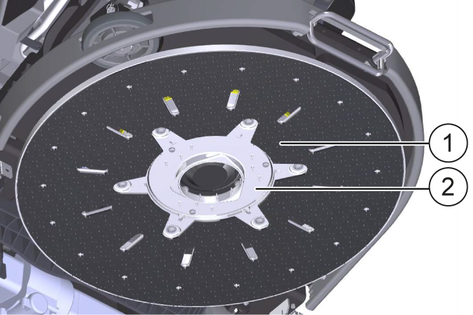
Align the new pad with the centre lock.
Press the pad firmly onto the pad drive board.
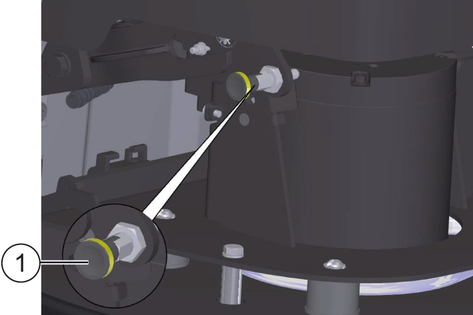
Hold the orbital head by the handle, pull out the locking pin suspension, swivel the orbital head back into the working position and allow the locking pin suspension to slide back into the original position while twisted.
Lock the push rod locking pin into the sliding bushing by positioning the head towards the welding assembly and turning the locking pin handles (2x).
Ensure that the locking pin is fully engaged.
Press the handle down to the stop.

Pull out the push rod locking pin on the side and turn it (2x).
Hold the orbital head by the handle and swivel it upwards as far as it will go.
The orbital head engages firmly in this position thanks to the locking pin.
Slowly remove the pad from the pad drive board.

Release the screw from the pad drive board with aluminium adapter (6x).
Release the screw on the centre lock (3x).
Replace the pad drive board with brush.
Screw on the pad drive board with aluminium adapter (6x).

Hold the orbital head by the handle, pull out the locking pin suspension, swivel the orbital head back into the working position and allow the locking pin suspension to slide back into the original position while twisted.
Lock the push rod locking pin into the sliding bushing by positioning the head towards the welding assembly and turning the locking pin handles (2x).
Ensure that the locking pin is fully engaged.
Press the handle down to the stop.
Inadvertently starting up device
Risk of injury
Set the program switch to "0" prior to all work on the device.Remove the Intelligent Key prior to all work on the device.Pull out the charger mains plug.Drain and dispose of the waste water and fresh water.
Contact Customer Service in the case of malfunctions that cannot be corrected using this table.
The device cannot be started
Remedy:
Insert the Intelligent Key.
Set the program switch to the desired program.
Operate the driving lever.
Check the batteries and charge if necessary.
Check that the battery terminals are correctly connected.
The water quantity is insufficient
Remedy:
Check the fresh water filling level and fill the tank if necessary.
Increase the water quantity.
DOSE version: Set the water quantity with the water quantity button on the control panel.
Other versions: Set the water quantity using the water quantity regulating knob.
Clean the fresh water filter.
R cleaning head: Clean the water distribution strip.
Check the hoses for clogging and clean if necessary.
The suction performance is too low
Remedy:
Set the programme switch to NORMAL or INTENSIVE MODE.
Set the suction power in the app to HIGH.
Shut down the device and drain the waste water.
Check that the cap on the waste water drain hose is closed.
Clean the seals between the waste water tank and the cover, check for leaks and replace if necessary.
Check the turbine screen for soiling and clean if necessary.
Clean the suction lips at the suction bar, turn over or replace if necessary.
Check the suction hose for clogging and clean if necessary.
Check the suction hose for leaks and replace if necessary.
Check the adjustment of the suction bar.
Hold the waste water tank by the recessed grip and pivot it sideways and upwards.
Check the seal on the suction turbine.
Check the seal on the suction duct.
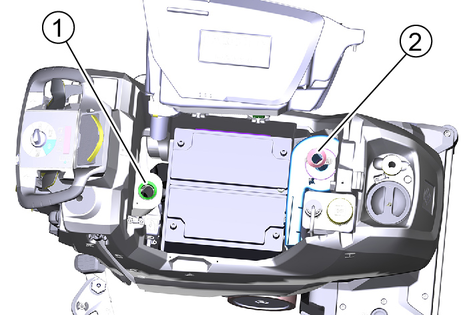
The cleaning results are unsatisfactory
Remedy:
Reduce the driving speed.
Select a more intensive cleaning programme.
Check the brushes for wear and replace if necessary.
Check the brush for soiling and clean if necessary.
Check the suitability of the brush type and detergent used.
Check the water supply.
Increase the water quantity.
Use the two-step method: In the first pass clean without suction, in the second pass clean with suction.
The suction turbine runs at an increased speed
Remedy:
Drain the waste water.
Clean the float.
Check the fluff filter and clean if necessary.
Check the suction hose for clogging and clean if necessary.
Check the suction bar for clogging and remove any clogging if necessary
The brushes do not rotate
Remedy:
Check if the brushes are blocked by a foreign body and remove the foreign body if necessary.
Set the program switch to the desired program.
Lower the cleaning head.
The device vibrates during cleaning
Remedy:
Check that the brush(es) are correctly installed.
Use a softer brush.
Renew the brush.
DOSE version only: The detergent dosing device does not work
Remedy:
Check the detergent level in the detergent canister.
Increase the detergent dosage.
Check the connection of the detergent hose to the detergent canister.
Clean the filter in the detergent canister.
Check the check valve in the hose to the cleaning head for blockage.
Check the hoses for leaks.
Check the functionality of the detergent pump.
The waste water drain hose is clogged
Remedy:
Open the dosing unit cover at the drain hose.
Pull the suction hose off the suction bar and close it by hand.
Set the program switch to a programme with suction.
The blockage is sucked out of the drain hose into the waste water tank.
Cause:
No intelligent key inserted.
Remedy:
Insert an intelligent key.
INCORRECT KIK
Cause:
The inserted Intelligent Key does not authorise the execution of the selected function.
Remedy:
Use a different Intelligent Key.
Possibly have the Intelligent Key used activated (depending on the case).
NO AUTHORISATION
Cause:
The inserted Intelligent Key does not authorise the execution of the selected function.
Remedy:
Use a different Intelligent Key.
Possibly have the Intelligent Key used activated (depending on the case).
RELEASE HANDLE SWITCH!
Cause:
When the device is switched on, a driving lever is operated.
Remedy:
Release both driving levers.
BATTERY LEVEL LOW
Cause:
The battery is almost empty. The cleaning functions of the device are automatically switched off.
Remedy:
Drive the device to the charging station and charge the battery.
BATTERY EMPTY
Cause:
The battery is empty. The cleaning functions and the travel drive are switched off.
Remedy:
Switch off the device, wait briefly and switch it on again. The drive to the charging station. If necessary, push it to the charging station when it is switched off. Charge the battery.
WATER FLOW FAULT
Water valve blockedCause:
The electric water valve is defective.
Remedy:
Contact customer service.
DRIVE MOT. OVERL.
Cause:
The current consumption of the driving motor is too high.
Remedy:
Check the travel drive train for foreign objects.
Find a path with a lower gradient.
Switch off the device, wait briefly, switch the device on again.
DRIVE MOT. BLOCK.
Driving motor blockedCause:
The driving motor is blocked.
Remedy:
Check the travel drive train for foreign objects.
Jack up each drive wheel individually and check whether it can be turned.
The device cannot be started
Remedy:
Insert the Intelligent Key.
Set the program switch to the desired program.
Operate the driving lever.
Check the batteries and charge if necessary.
Check that the battery terminals are correctly connected.
The water quantity is insufficient
Remedy:
Check the fresh water filling level and fill the tank if necessary.
Increase the water quantity.
DOSE version: Set the water quantity with the water quantity button on the control panel.
Other versions: Set the water quantity using the water quantity regulating knob.
Clean the fresh water filter.
R cleaning head: Clean the water distribution strip.
Check the hoses for clogging and clean if necessary.
The suction performance is too low
Remedy:
Set the programme switch to NORMAL or INTENSIVE MODE.
Set the suction power in the app to HIGH.
Shut down the device and drain the waste water.
Check that the cap on the waste water drain hose is closed.
Clean the seals between the waste water tank and the cover, check for leaks and replace if necessary.
Check the turbine screen for soiling and clean if necessary.
Clean the suction lips at the suction bar, turn over or replace if necessary.
Check the suction hose for clogging and clean if necessary.
Check the suction hose for leaks and replace if necessary.
Check the adjustment of the suction bar.
Hold the waste water tank by the recessed grip and pivot it sideways and upwards.
Check the seal on the suction turbine.
Check the seal on the suction duct.

The cleaning results are unsatisfactory
Remedy:
Reduce the driving speed.
Select a more intensive cleaning programme.
Check the brushes for wear and replace if necessary.
Check the brush for soiling and clean if necessary.
Check the suitability of the brush type and detergent used.
Check the water supply.
Increase the water quantity.
Use the two-step method: In the first pass clean without suction, in the second pass clean with suction.
The suction turbine runs at an increased speed
Remedy:
Drain the waste water.
Clean the float.
Check the fluff filter and clean if necessary.
Check the suction hose for clogging and clean if necessary.
Check the suction bar for clogging and remove any clogging if necessary
The brushes do not rotate
Remedy:
Check if the brushes are blocked by a foreign body and remove the foreign body if necessary.
Set the program switch to the desired program.
Lower the cleaning head.
The device vibrates during cleaning
Remedy:
Check that the brush(es) are correctly installed.
Use a softer brush.
Renew the brush.
DOSE version only: The detergent dosing device does not work
Remedy:
Check the detergent level in the detergent canister.
Increase the detergent dosage.
Check the connection of the detergent hose to the detergent canister.
Clean the filter in the detergent canister.
Check the check valve in the hose to the cleaning head for blockage.
Check the hoses for leaks.
Check the functionality of the detergent pump.
The waste water drain hose is clogged
Remedy:
Open the dosing unit cover at the drain hose.
Pull the suction hose off the suction bar and close it by hand.
Set the program switch to a programme with suction.
The blockage is sucked out of the drain hose into the waste water tank.
Cause:
No intelligent key inserted.
Remedy:
Insert an intelligent key.
INCORRECT KIK
Cause:
The inserted Intelligent Key does not authorise the execution of the selected function.
Remedy:
Use a different Intelligent Key.
Possibly have the Intelligent Key used activated (depending on the case).
NO AUTHORISATION
Cause:
The inserted Intelligent Key does not authorise the execution of the selected function.
Remedy:
Use a different Intelligent Key.
Possibly have the Intelligent Key used activated (depending on the case).
RELEASE HANDLE SWITCH!
Cause:
When the device is switched on, a driving lever is operated.
Remedy:
Release both driving levers.
BATTERY LEVEL LOW
Cause:
The battery is almost empty. The cleaning functions of the device are automatically switched off.
Remedy:
Drive the device to the charging station and charge the battery.
BATTERY EMPTY
Cause:
The battery is empty. The cleaning functions and the travel drive are switched off.
Remedy:
Switch off the device, wait briefly and switch it on again. The drive to the charging station. If necessary, push it to the charging station when it is switched off. Charge the battery.
WATER FLOW FAULT
Water valve blockedCause:
The electric water valve is defective.
Remedy:
Contact customer service.
DRIVE MOT. OVERL.
Cause:
The current consumption of the driving motor is too high.
Remedy:
Check the travel drive train for foreign objects.
Find a path with a lower gradient.
Switch off the device, wait briefly, switch the device on again.
DRIVE MOT. BLOCK.
Driving motor blockedCause:
The driving motor is blocked.
Remedy:
Check the travel drive train for foreign objects.
Jack up each drive wheel individually and check whether it can be turned.
General | |
Travel speed (max.) | 6 km/h |
Theoretical surface performance | 3060 m2/h |
Practical surface performance | 1380 m2/h |
Waste water tank capacity | 50 l |
Coarse dirt container capacity | - l |
Volume of detergent tank ("Dose" option) | 3 l |
Detergent dosing | 0...3 % |
Water dosage | 0...2,5±0,2 l/min |
Dimensions | |
Length | 1375 mm |
Width without suction bar | 542 mm |
Height | 1082 mm |
Working width | 510 mm |
Packaging dimensions lxwxh | 1505x770x1271 mm |
Tyres | |
Front wheel, width | 50 mm |
Front wheel, diameter | 200 mm |
Rear wheel, width | 28 mm |
Rear wheel, diameter | 100 mm |
Weight | |
Approved total weight | 245 kg |
Net weight (transport weight) | 195 kg |
Brush contact force, max. | 290 (29) N (kg) |
Brush contact pressure, max. | 3,2 (32) N / m2 (g / cm2) |
Device performance data | |
Nominal voltage | 24 V |
Nominal voltage, Li-Ion | 25,6 V |
Battery capacity | 76 / 80 / 105 / 115 Ah (5 h) |
Battery capacity, Li-Ion | 80 Ah (5 h) |
Mean power input | 1300 W |
Driving motor power | 130 W |
Suction turbine power | 250 W |
Brush drive power | 800 W |
Degree of protection | IPX3 |
Vacuuming | |
Suction performance, air quantity | 21 l/s |
Vacuum (max.) | 9,5 (95) kPa (mbar) |
Cleaning brushes | |
Brush diameter | 510 mm |
Brush length | - mm |
Brush speed | 140 1/min |
Internal charger | |
Nominal voltage | 100...240 V |
Frequency | 50-60 Hz |
Current consumption | max 5 A |
Charging time | max 14 h |
Internal quick charger (lithium-ion version only) | |
Nominal voltage | 100...240 V |
Frequency | 50-60 Hz |
Current consumption | max 10 A |
Charging time | max 2,5 h |
Ambient conditions | |
Permissible temperature range | 5...40 °C |
Water temperature max. | 50 °C |
Filling system water pressure | 1(10) MPa (bar) |
Waste water tank flushing system water pressure | 1 (10) MPa (bar) |
Relative humidity | 20...90 % |
Incline | |
Max. working area slope | 2 % |
Determined values in acc. with EN 60335-2-72 | |
Hand-arm vibration value | 0,2 m/s2 |
Uncertainty K | 0,2 m/s2 |
Sound level LpA normal operation | 65 dB(A) |
Uncertainty KpA | 2 dB(A) |
Sound power level LWA + Uncertainty KWA normal operation | 81 dB(A) |
General | |
Travel speed (max.) | 6 km/h |
Theoretical surface performance | 3600 m2/h |
Practical surface performance | 1620 m2/h |
Waste water tank capacity | 50 l |
Coarse dirt container capacity | - l |
Volume of detergent tank ("Dose" option) | 3 l |
Detergent dosing | 0...3 % |
Water dosage | 0...2,6±0,2 l/min |
Dimensions | |
Length | 1290 mm |
Width without suction bar | 542 mm |
Height | 1082 mm |
Working width | 600 mm |
Packaging dimensions lxwxh | 1505x770x1271 mm |
Tyres | |
Front wheel, width | 50 mm |
Front wheel, diameter | 200 mm |
Rear wheel, width | 28 mm |
Rear wheel, diameter | 100 mm |
Weight | |
Approved total weight | 241 kg |
Net weight (transport weight) | 191 kg |
Brush contact force, max. | 250 (25) N (kg) |
Brush contact pressure, max. | 2,5 (25) N / m2 (g / cm2) |
Device performance data | |
Nominal voltage | 24 V |
Nominal voltage, Li-Ion | 25,6 V |
Battery capacity | 76 / 80 / 105 / 115 Ah (5 h) |
Battery capacity, Li-Ion | 80 Ah (5 h) |
Mean power input | 1300 W |
Driving motor power | 130 W |
Suction turbine power | 250 W |
Brush drive power | 800 W |
Degree of protection | IPX3 |
Vacuuming | |
Suction performance, air quantity | 21 l/s |
Vacuum (max.) | 9,5 (95) kPa (mbar) |
Cleaning brushes | |
Brush diameter | 600 mm |
Brush length | - mm |
Brush speed | 150 1/min |
Internal charger | |
Nominal voltage | 100...240 V |
Frequency | 50-60 Hz |
Current consumption | max 5 A |
Charging time | max 14 h |
Internal quick charger (lithium-ion version only) | |
Nominal voltage | 100...240 V |
Frequency | 50-60 Hz |
Current consumption | max 10 A |
Charging time | max 2,5 h |
Ambient conditions | |
Permissible temperature range | 5...40 °C |
Water temperature max. | 50 °C |
Filling system water pressure | 1(10) MPa (bar) |
Waste water tank flushing system water pressure | 1 (10) MPa (bar) |
Relative humidity | 20...90 % |
Incline | |
Max. working area slope | 2 % |
Determined values in acc. with EN 60335-2-72 | |
Hand-arm vibration value | 0,2 m/s2 |
Uncertainty K | 0,2 dB(A) |
Sound level LpA normal operation | 65 dB(A) |
Uncertainty KpA | 2 dB(A) |
Sound power level LWA + Uncertainty KWA normal operation | 81 dB(A) |
General | |
Travel speed (max.) | 6 km/h |
Theoretical surface performance | 3060 m2/h |
Practical surface performance | 1490 m2/h |
Waste water tank capacity | 50 l |
Coarse dirt container capacity | 3,5 l |
Volume of detergent tank ("Dose" option) | 3 l |
Detergent dosing | 0...3 % |
Water dosage | 0...2,6±0,2 l/min |
Dimensions | |
Length | 1284 mm |
Width without suction bar | 542 mm |
Height | 1082 mm |
Working width | 550 mm |
Packaging dimensions lxwxh | 1505x770x1271 mm |
Tyres | |
Front wheel, width | 50 mm |
Front wheel, diameter | 200 mm |
Rear wheel, width | 28 mm |
Rear wheel, diameter | 100 mm |
Weight | |
Approved total weight | 235 kg |
Net weight (transport weight) | 185 kg |
Brush contact force, max. | 155 (15,5) N (kg) |
Brush contact pressure, max. | 6,3 (63) N / m2 (g / cm2) |
Device performance data | |
Nominal voltage | 24 V |
Nominal voltage, Li-Ion | 25,6 V |
Battery capacity | 76 / 80 / 105 / 115 Ah (5 h) |
Battery capacity, Li-Ion | 80 Ah (5 h) |
Mean power input | 1350 W |
Driving motor power | 130 W |
Suction turbine power | 250 W |
Brush drive power | 980 W |
Degree of protection | IPX3 |
Vacuuming | |
Suction performance, air quantity | 21 l/s |
Vacuum (max.) | 9,5 (95) kPa (mbar) |
Cleaning brushes | |
Brush diameter | 96 mm |
Brush length | 550 mm |
Brush speed | 965 1/min |
Internal charger | |
Nominal voltage | 100...240 V |
Frequency | 50-60 Hz |
Current consumption | max 5 A |
Charging time | max 14 h |
Internal quick charger (lithium-ion version only) | |
Nominal voltage | 100...240 V |
Frequency | 50-60 Hz |
Current consumption | max 10 A |
Charging time | max 2,5 h |
Ambient conditions | |
Permissible temperature range | 5...40 °C |
Water temperature max. | 50 °C |
Filling system water pressure | 1(10) MPa (bar) |
Waste water tank flushing system water pressure | 1 (10) MPa (bar) |
Relative humidity | 20...90 % |
Incline | |
Max. working area slope | 2 % |
Determined values in acc. with EN 60335-2-72 | |
Hand-arm vibration value | 0,2 m/s2 |
Uncertainty K | 0,2 m/s2 |
Sound level LpA normal operation | 65 dB(A) |
Uncertainty KpA | 2 dB(A) |
Sound power level LWA + Uncertainty KWA normal operation | 81 dB(A) |
General | |
Travel speed (max.) | 6 km/h |
Theoretical surface performance | 3060 m2/h |
Practical surface performance | 1380 m2/h |
Waste water tank capacity | 50 l |
Coarse dirt container capacity | - l |
Volume of detergent tank ("Dose" option) | 3 l |
Detergent dosing | 0...3 % |
Water dosage | 0...2,5±0,2 l/min |
Dimensions | |
Length | 1380 mm |
Width without suction bar | 542 mm |
Height | 1082 mm |
Working width | 510 mm |
Packaging dimensions lxwxh | 1505x770x1271 mm |
Tyres | |
Front wheel, width | 50 mm |
Front wheel, diameter | 200 mm |
Rear wheel, width | 28 mm |
Rear wheel, diameter | 100 mm |
Weight | |
Approved total weight | 257 kg |
Net weight (transport weight) | 207 kg |
Brush contact force, max. | 340 (34) N (kg) |
Brush contact pressure, max. | 3,2 (32) N / m2 (g / cm2) |
Device performance data | |
Nominal voltage | 24 V |
Nominal voltage, Li-Ion | 25,6 V |
Battery capacity | 76 / 80 / 105 / 115 Ah (5 h) |
Battery capacity, Li-Ion | 80 Ah (5 h) |
Mean power input | 1300 W |
Driving motor power | 130 W |
Suction turbine power | 250 W |
Brush drive power | 800 W |
Degree of protection | IPX3 |
Vacuuming | |
Suction performance, air quantity | 21 l/s |
Vacuum (max.) | 9,5 (95) kPa (mbar) |
Cleaning brushes | |
Brush diameter | 510 mm |
Brush length | - mm |
Brush speed | 140 1/min |
Internal charger | |
Nominal voltage | 100...240 V |
Frequency | 50-60 Hz |
Current consumption | max 5 A |
Charging time | max 14 h |
Internal quick charger (lithium-ion version only) | |
Nominal voltage | 100...240 V |
Frequency | 50-60 Hz |
Current consumption | max 10 A |
Charging time | max 2,5 h |
Ambient conditions | |
Permissible temperature range | 5...40 °C |
Water temperature max. | 50 °C |
Filling system water pressure | 1(10) MPa (bar) |
Waste water tank flushing system water pressure | 1 (10) MPa (bar) |
Relative humidity | 20...90 % |
Incline | |
Max. working area slope | 2 % |
Determined values in acc. with EN 60335-2-72 | |
Hand-arm vibration value | 1,5 m/s2 |
Uncertainty K | 0,5 m/s2 |
Sound level LpA normal operation | 65 dB(A) |
Uncertainty KpA | 2 dB(A) |
Sound power level LWA + Uncertainty KWA normal operation | 81 dB(A) |
The warranty conditions issued by our relevant sales company apply in all countries. We shall remedy possible malfunctions on your appliance within the warranty period free of cost, provided that a material or manufacturing flaw is the cause. In a warranty case, please contact your dealer (with the purchase receipt) or the next authorised customer service site.
Further information can be found at: www.kaercher.com/dealersearch
Further warranty information (if available) can be found in the service area of your local Kärcher website under "Downloads".
EU Declaration of Conformity |
We hereby declare that the machine described below complies with the relevant basic safety and health requirements in the EU Directives, both in its basic design and construction as well as in the version placed in circulation by us. This declaration is invalidated by any changes made to the machine that are not approved by us.
Product: Floor cleaner
Type: 1.533-xxx
Currently applicable EU Directives2006/42/EC (+2009/127/EC)
2014/30/EU
2014/53/EU (TCU)
Harmonised standards usedEN 60335-1
EN 60335-2-29
EN 60335-2-72
EN 62311: 2008
EN 55012: 2007 + A1: 2009
EN 61000-6-3: 2007 + A1:2011
EN IEC 61000-6-2: 2005
TCUEN 301 511 V12.5.1
EN 300 440 V2.1.1
EN 300 328 V2.2.2
EN 300 330 V2.1.1
National standards used-
The signatories act on behalf of and with the authority of the company management.

Documentation supervisor:
S. Reiser
Alfred Kärcher SE & Co. KG
Alfred-Kärcher-Str. 28 - 40
71364 Winnenden (Germany)
Ph.: +49 7195 14-0
Fax: +49 7195 14-2212
Winnenden, 2021/08/01
Declaration of Conformity (UK) |
We hereby declare that the product described below complies with the relevant provisions of the following UK Regulations, both in its basic design and construction as well as in the version put into circulation by us. This declaration shall cease to be valid if the product is modified without our prior approval.
Product: Floor cleaner
Type: 1.533-xxx
Currently applicable UK RegulationsS.I. 2008/1597 (as amended)
S.I. 2016/1091 (as amended)
S.I. 2017/1206 (as amended) (TCU)
Designated standards usedEN 60335-1
EN 60335-2-29
EN 60335-2-72
EN 62311: 2008
EN 55012: 2007 + A1: 2009
EN 61000-6-3: 2007 + A1:2011
EN IEC 61000-6-2: 2005
TCUEN 301 511 V12.5.1
EN 300 440 V2.1.1
EN 300 328 V2.2.2
EN 300 330 V2.1.1
National standards used-
The signatories act on behalf of and with the authority of the company management.

Documentation supervisor:
S. Reiser
Alfred Kärcher SE & Co. KG
Alfred-Kärcher-Str. 28 - 40
71364 Winnenden (Germany)
Ph.: +49 7195 14-0
Fax: +49 7195 14-2212
Winnenden, 2021/08/01
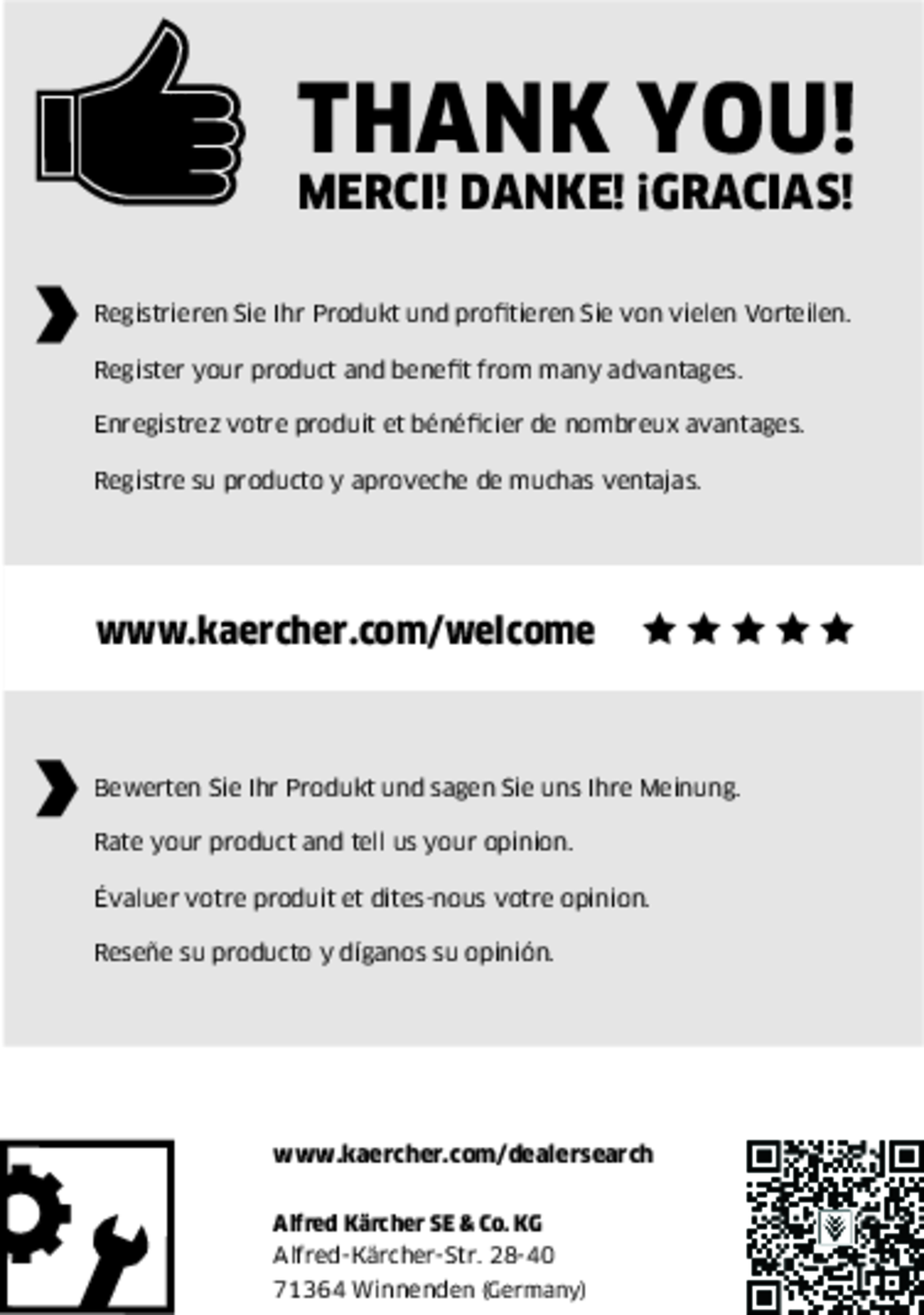
2-2-NN-A4-GS-19869